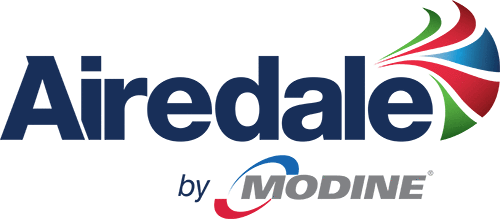Design Smarter, Fail Less: How Predictive Maintenance Is Reshaping Data Center Cooling
Not long ago, predictive maintenance in data centers was a nice-to-have.
It helped teams catch the occasional fan failure or compressor issue before it snowballed. It shaved off a few service calls. If you were lucky, it saved some downtime.
But that was before cooling systems got this complex.
Today, thermal environments aren’t simple or uniform anymore. Air and chilled-water systems run side by side, with pockets of liquid cooling near high-density racks, while AI loads surge and efficiency targets tighten. Predictive maintenance keeps that live system on track by spotting small drifts before they become failures. For example, it can notice a chiller working harder than it should on a mild day – fans speeding up and power use ticking higher – flagging a likely dirty coil and prompting a quick clean before efficiency slips and your safety margin shrinks.
Early intervention is what makes predictive maintenance is foundational. If you want to design leaner, manage smarter, and stay out of reaction mode, PdM isn’t a tool. It’s the backbone of your operations.
Cooling Systems Are No Longer Simple Machines
Walk into a modern data hall and you’re not just seeing equipment, you’re seeing a layered ecosystem of interconnected thermal pathways.
CRACs modulate based on dynamic load shifts. Immersion tanks quietly manage heat from GPU clusters. Chilled water loops snake through racks pushing 30, 40, 50kW per cabinet. Everything is active, responsive, and under pressure.
In this environment, traditional preventive maintenance just doesn’t cut it anymore. Scheduled inspections don’t detect pressure anomalies between shifts. Manual checks don’t catch early-stage coil fouling. By the time a failure is visible, it’s already a problem.
What you need is the ability to see failure before it forms and to tune performance proactively, not reactively.
Beyond Alerts: What Predictive Maintenance Actually Enables
At its best, predictive maintenance isn’t just about red flags. It’s about running tighter, faster, and with less overbuild. With high-fidelity telemetry, temperature, pressure, flow, vibration, and more, fed into intelligent control platforms, PdM can unlock decisions that traditional BMS simply can’t see.
This is how leading data centers are:
- Reclaiming overbuilt capacity by operating closer to system design limits, safely
- Reducing energy waste from chronic overcooling and unnecessary redundancy
- Avoiding thermal cascading by modeling how failure in one component will impact others
- Tuning performance by zone, not just system-wide
Put simply: PdM lets you stop flying blind by building a feedback loop that evolves with your environment.
The Use Case Spectrum: PdM in Every Cooling Modality
No matter the system, predictive maintenance has a job to do. It just looks a little different depending on what’s cooling your racks.
Air-Based Systems (CRAC/CRAH):
Here, PdM helps identify compressor inefficiencies, fan imbalance, or airflow restrictions before they result in temperature drift. Early signs like pressure cycling or motor vibration are caught and acted on without needing to wait for an alarm.
Chilled Water Systems:
With pumps, valves, and heat exchangers all susceptible to subtle degradation, PdM tools trained on ∆T performance and flow rates can catch inefficiencies like cavitation or microbubbles long before they reduce system capacity.
In-Rack / In-Row Cooling:
Localized PdM can detect blocked airflow paths, fan degradation, or even underfloor pressure losses. These insights help avoid hot zones in dense rack environments where timing and precision are everything.
Two-Phase Liquid Immersion:
There’s no peeking inside. Predictive maintenance becomes your only insight into fluid health, flow consistency, and pump reliability. Without it, you’re waiting for a failure without knowing where it’s coming from.
From Insight to Action: The Role of Intelligent Controls
Airedale’s ACIS™ platform is built for this. It takes raw telemetry and turns it into decision-ready data, so you can act before something fails.
Instead of waiting for thresholds to trip, the system models degradation curves. It learns your environment. It adapts to your cooling topology, whether it’s legacy CRACs, liquid-cooled racks, or immersion tanks.
Just as important, it closes the loop. Predictive alerts trigger real-time logic: adjusting flow, opening valves, signaling containment dampers, or escalating when needed.
This is predictive maintenance that works like a system, not just a spreadsheet.
What Gets in the Way and How to Fix It
Predictive maintenance sounds great—but it isn’t magic. To work reliably, a few basics have to be in place:
- Sensors need to be accurate, calibrated, and sampling at sensible intervals.
- Data should be tied to the right piece of equipment – not lost in a pile of unlabelled points.
- You need enough past data to tell the difference between normal noise and the first signs of trouble.
Even then, AI is an assistant, not the mechanic. It’s excellent at spotting early warning patterns across many signals, but turning those signals into a fix usually takes a technician’s diagnostic know-how and hands-on validation. In practice, AI flags the “why is this different?” and skilled people confirm the “what do we do now?”
Integration matters, too. Many sites still have systems that don’t talk to each other – building management here, controls there, a third-party dashboard in the middle. Without orchestration, PdM alerts don’t become work orders, setpoint changes, or scheduled service.
At Airedale, we recommend starting small, connecting what you already have, and scaling. Our phased approach, platform-level control, and integrations plug into your existing environment, so you don’t have to rip and replace. This helps you connect the dots: clean data in, useful alerts out, and a clear path from “AI noticed something” to “a technician confirmed it and fixed it.”
The Bigger Picture: PdM as a Foundation for Autonomous Cooling
Let’s zoom out.
What we’re really building toward is autonomous optimization, systems that run
themselves, learn over time, and keep you operating at peak performance with minimal intervention.
In this world, PdM isn’t a feature. It’s infrastructure.
It enables smarter provisioning for modular builds. It supports tighter energy targets for ESG compliance. It lets edge sites run with minimal human intervention – and hyperscale builds run with tighter margins and more uptime.
If your cooling system can predict its own future, it can shape it too.
Redefining Reliability
Predictive maintenance is no longer a checkbox on a procurement spec. It’s how the smartest data centers are designing better, running tighter, and adapting faster to increasingly complex thermal demands.
And as cooling architectures evolve from traditional to hybrid to fully immersive, PdM is the common thread that keeps systems stable, efficient, and ready for whatever comes next
At Airedale, we’re building platforms that think ahead—because your cooling system should too. Want to talk about what smarter thermal management could look like in your next deployment? Let’s start the conversation.





